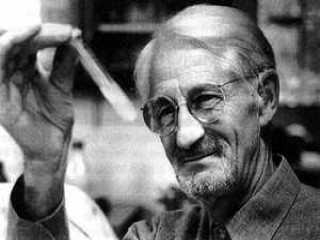
Jens C. Skou biography
Date of birth : 1918-10-08
Date of death : -
Birthplace : Lemvig, Denmark
Nationality : Danish
Category : Science and Technology
Last modified : 2011-09-19
Credited as : physician, scientist, sodium and potassium ions
0 votes so far
kou studied medicine at the University of Copenhagen and in 1954 earned a doctorate degree at Aarhus University, where he later taught. His research on ion-carrying enzymes was based on the work of Sir Alan Hodgkin and Richard Keynes, who followed the movements of sodium and potassium in a nerve cell following stimulation. The English scientists discovered that upon activation of the neuron, sodium ions flood the cell. The sodium concentration level is restored when ions are transported back across the membrane. This process requires energy, since transport occurs against a concentration gradient (from an area of low concentration to high concentration) and so was believed to require energy in the form of the energy-carrying molecule adenosine triphosphate (ATP).
In the late 1950s Skou proposed that an enzyme is responsible for the transport of molecules through a cell's membrane. His work with the membranes of nerve cells from crabs led to the discovery of Na+-K+ ATPase. Bound to a cell membrane, Na+-K+ ATPase is activated by external potassium and internal sodium. The enzyme pumps sodium out of the cell and potassium into it, thereby maintaining a high intracellular concentration of potassium and a low concentration of sodium relative to the surrounding external environment. Skou's work led to the discovery of similar ATPase-based enzymes, including the ion pump that controls muscle contraction.
Awards and honors:
SSAG Anders Retzius Medal 1977
Fernström Foundation's Nordic Prize 1985
Nobel Prize for Chemistry 1997 (with Paul D. Boyer and John E. Walker)
Academia Europaea
American Physiological Society Foreign Member
European Molecular Biology Organization
German Academy of Sciences Leopoldina Foreign Member
Japanese Biochemical Society Foreign Member
National Academy of Sciences Foreign Associate
Royal Danish Academy of Sciences and Letters
















